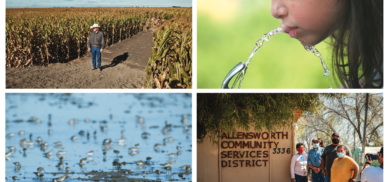
New Report Addresses Findings That Most California Groundwater Sustainability Plans Fail to Protect Vulnerable Communities and the Environment
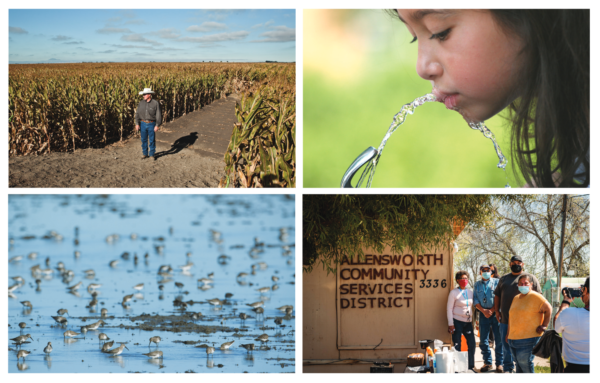 A new report, authored by experts from organizations including The Nature Conservancy, the Union of Concerned Scientists, Audubon California, and Clean Water Action, provides a set of recommendations on how California’s Sustainable Groundwater Management Act can better protect vulnerable communities and the environment. The recommendations are based on findings from a study published this week in Nature Communications, which found that the majority of local groundwater plans developed under California’s Sustainable Groundwater Management Act (SGMA) overlook the state’s most vulnerable groundwater users.
A new report, authored by experts from organizations including The Nature Conservancy, the Union of Concerned Scientists, Audubon California, and Clean Water Action, provides a set of recommendations on how California’s Sustainable Groundwater Management Act can better protect vulnerable communities and the environment. The recommendations are based on findings from a study published this week in Nature Communications, which found that the majority of local groundwater plans developed under California’s Sustainable Groundwater Management Act (SGMA) overlook the state’s most vulnerable groundwater users.
More than 100 groundwater sustainability plans submitted to the State of California and required under SGMA in 2020 and 2022 were rigorously reviewed to assess the degree to which each plan integrates diverse stakeholder groups into the planning process.
In response to the study’s findings, the report released recommends that large data gaps from insufficient groundwater monitoring be closed in order to decrease the risk that unsustainable groundwater use will harm underrepresented communities and the environment.
The report also makes recommendations to address the study’s finding that groundwater sustainability plans lack information about climate change impacts on water resources.
For more information:
 Read the Summary Report: Achieving Groundwater Access for All: A new report was released, authored by experts from organizations including TNC, the Union of Concerned Scientists, Audubon California, and Clean Water Action. Based on the study published in Nature Communications, the report outlines a robust set of recommendations on how Sustainable Groundwater Management Act (SGMA) can better protect vulnerable communities and the environment. Click here for the summary report.
Read the Summary Report: Achieving Groundwater Access for All: A new report was released, authored by experts from organizations including TNC, the Union of Concerned Scientists, Audubon California, and Clean Water Action. Based on the study published in Nature Communications, the report outlines a robust set of recommendations on how Sustainable Groundwater Management Act (SGMA) can better protect vulnerable communities and the environment. Click here for the summary report.
Access the Interactive Story Map: 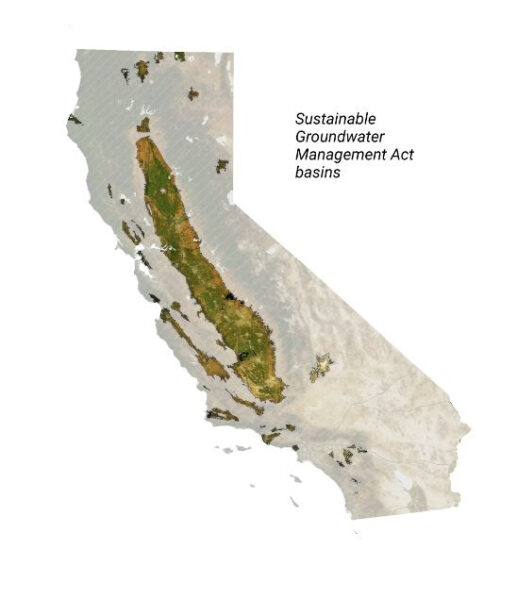 Drawing from the summary report and article, journalist Geoff McGhee has created this online piece to provide a visual storytelling of how most California Groundwater Sustainability Plans (GSPs) fail to protect vulnerable communities and the environment. This interactive story map allows readers to engage in the findings and take a close look at how their groundwater sustainability agency’s plans compare to others in the state. Click here to access the interactive story map.
Drawing from the summary report and article, journalist Geoff McGhee has created this online piece to provide a visual storytelling of how most California Groundwater Sustainability Plans (GSPs) fail to protect vulnerable communities and the environment. This interactive story map allows readers to engage in the findings and take a close look at how their groundwater sustainability agency’s plans compare to others in the state. Click here to access the interactive story map.
Attend the webinar to hear an overview of the analysis of the plans and information about how the plans fail to protect groundwater for many. The webinar includes brief presentations, a live demonstration of an interactive visual data tool, and will follow with a Question and Answer session. Click here to register.
 Read the Article in Nature Communications: TNC-CA partners published a recent study ‘Stakeholder integration predicts better outcomes from groundwater sustainability policy’ in Nature Communications which found that the majority of local groundwater plans developed under California’s Sustainable Groundwater Management Act (SGMA) overlook the state’s most vulnerable groundwater users. More than 100 groundwater sustainability plans submitted to the State of California and required under SGMA in 2020 and 2022 were rigorously reviewed to assess the degree to which each plan integrates diverse stakeholder groups into the planning process. Click here to read the research article.
Read the Article in Nature Communications: TNC-CA partners published a recent study ‘Stakeholder integration predicts better outcomes from groundwater sustainability policy’ in Nature Communications which found that the majority of local groundwater plans developed under California’s Sustainable Groundwater Management Act (SGMA) overlook the state’s most vulnerable groundwater users. More than 100 groundwater sustainability plans submitted to the State of California and required under SGMA in 2020 and 2022 were rigorously reviewed to assess the degree to which each plan integrates diverse stakeholder groups into the planning process. Click here to read the research article.

UPCOMING WEBINAR: SGMA Review: Achieving Groundwater Access for All & Visual Data Tool Demonstration, plus Office Hours returns
CivicWell and the Groundwater Exchange are excited to announce a webinar event to share the Groundwater Leadership Forum’s comprehensive review of groundwater sustainability plans to protect users’ access to groundwater.
This free webinar will provide an overview of the analysis of the plans and information about how the plans fail to protect groundwater for many.
The webinar includes brief presentations, a live demonstration of an interactive visual data tool, and will follow with a Question and Answer session.
SAVE THE DATE! Office Hours returns with the PPIC’s Ellen Hanak on September 27, 12pm to 1pm. Your chance to pick Ellen’s brain on San Joaquin Valley groundwater issues. Registration link coming soon. Click here to join our email list to be notified to this and other webinars from Maven’s Notebook and partners.

How Farmers Used California’s Floods to Revive Aquifers
 As an onslaught of storms soaked California with record-breaking rain last winter, Christine Gemperle found herself crisscrossing her almond orchards in knee-high muck boots and a slicker. She was out in the driving rain doing exactly what many farmers were trying to prevent: opening her irrigation gates and letting the flood rush into her orchards. …
As an onslaught of storms soaked California with record-breaking rain last winter, Christine Gemperle found herself crisscrossing her almond orchards in knee-high muck boots and a slicker. She was out in the driving rain doing exactly what many farmers were trying to prevent: opening her irrigation gates and letting the flood rush into her orchards. …
For generations, during dry periods, California farmers have pumped water from deep underground to keep their crops hydrated when surface water supplies are scarce. Gemperle is no exception. Like many of her fellow farmers in California’s agricultural Central Valley, in dry years she turns to underground aquifers to irrigate the 135-acre almond farm she runs with her brother in Turlock.
But if farmers are the biggest takers of California’s dwindling groundwater supply, they are also becoming critical players in filling those aquifers back up. This year, Gemperle Orchards joined a growing number of farms helping to replenish overdrawn aquifers by flooding their orchards and fields with excess stormwater during wet seasons and letting it soak into the ground.
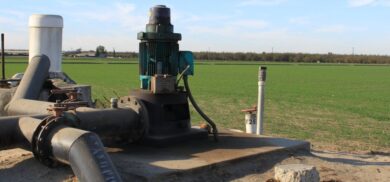
SGMA Inadequate Subbasins Update
By Geoff Vanden Heuvel, Director of Regulatory and Economic Affairs at the Milk Producers Council:
There is intense activity going on right now in the Groundwater Sustainability Agencies (GSAs) whose plans were deemed “inadequate” by the Department of Water Resources (DWR) this past spring. Sustainable Groundwater Management Act (SGMA) enforcement for the six inadequate subbasins was transferred to the State Water Resources Control Board (SWRCB).
A SWRCB staff report to the State Board last month had this summary: “the six basins with inadequate GSPs, from north to south, are the Chowchilla, Delta-Mendota, Kaweah, Tulare Lake, Tule, and Kern County subbasins. Deficiencies DWR noted include, but are not limited to, insufficient sustainable management criteria, the potential for dewatering of drinking water wells, impacts of subsidence, and lack of coordination amongst GSAs.”
Here is what I am learning from the public meetings I attend about where these subbasins are in addressing the items identified by DWR.
Click here to continue reading at the Milk Producers Council.

RESEARCH ARTICLE: From Drought to Deluge: Designing Groundwater Pricing Policies to Cope With California’s Water Woes
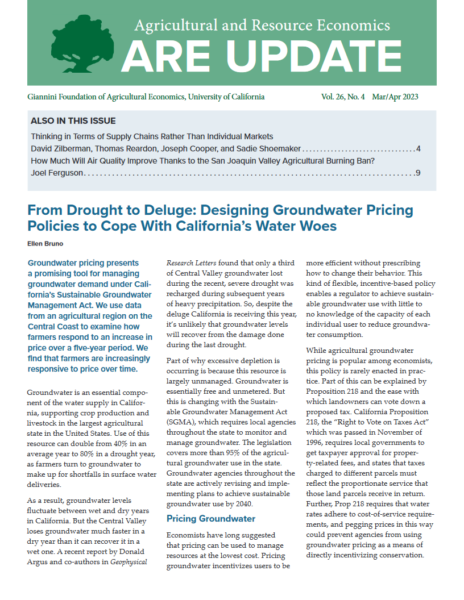 Groundwater pricing presents a promising tool for managing groundwater demand under California’s Sustainable Groundwater Management Act.
Groundwater pricing presents a promising tool for managing groundwater demand under California’s Sustainable Groundwater Management Act.
We use data from an agricultural region on the Central Coast to examine how farmers respond to an increase in price over a five-year period. We find that farmers are increasingly responsive to price over time.
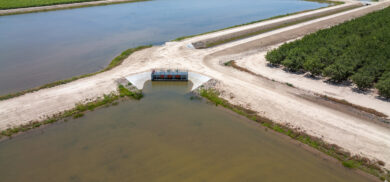
RESEARCH ARTICLE: How Is Demand Management Developing in SGMA Groundwater Sustainability Plans
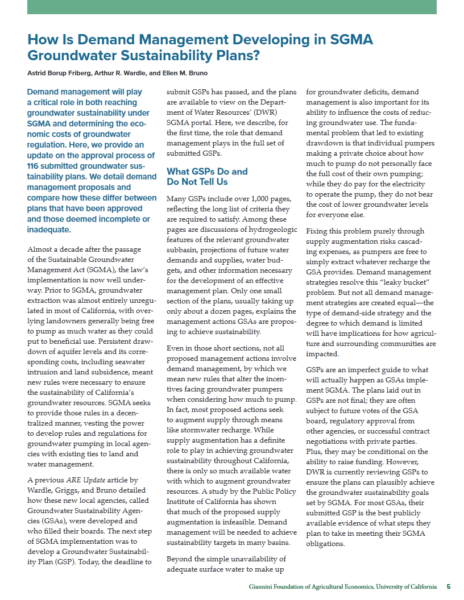 Demand management will play a critical role in both reaching groundwater sustainability under SGMA and determining the economic costs of groundwater regulation.
Demand management will play a critical role in both reaching groundwater sustainability under SGMA and determining the economic costs of groundwater regulation.
Here, we provide an update on the approval process of 116 submitted groundwater sustainability plans. We detail demand management proposals and compare how these differ between plans that have been approved and those deemed incomplete or inadequate.
Click here to read this article from the UC Gianinni Foundation of Agricultural Economics.

RESEARCH ARTICLE: Recycled water could recharge aquifers in the Central Valley
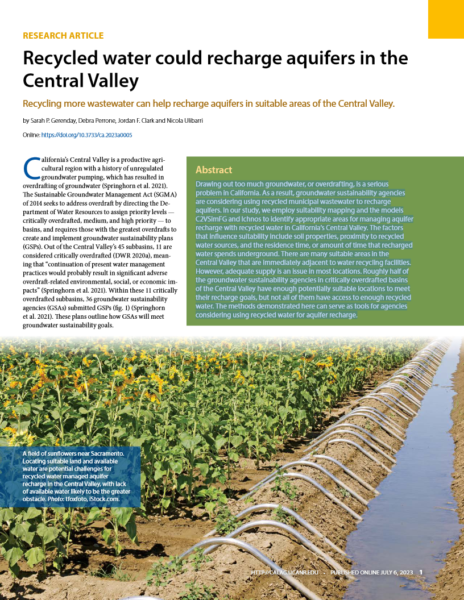 Drawing out too much groundwater, or overdrafting, is a serious problem in California. As a result, groundwater sustainability agencies are considering using recycled municipal wastewater to recharge aquifers. In our study, we employ suitability mapping and the models C2VSimFG and Ichnos to identify appropriate areas for managing aquifer recharge with recycled water in California’s Central Valley.
Drawing out too much groundwater, or overdrafting, is a serious problem in California. As a result, groundwater sustainability agencies are considering using recycled municipal wastewater to recharge aquifers. In our study, we employ suitability mapping and the models C2VSimFG and Ichnos to identify appropriate areas for managing aquifer recharge with recycled water in California’s Central Valley.
The factors that influence suitability include soil properties, proximity to recycled water sources, and the residence time, or amount of time that recharged water spends underground. There are many suitable areas in the Central Valley that are immediately adjacent to water recycling facilities.
However, adequate supply is an issue in most locations. Roughly half of the groundwater sustainability agencies in critically overdrafted basins of the Central Valley have enough potentially suitable locations to meet their recharge goals, but not all of them have access to enough recycled water.
The methods demonstrated here can serve as tools for agencies considering using recycled water for aquifer recharge.

SGMA in the news …
Can California cropland be repurposed for community solar?
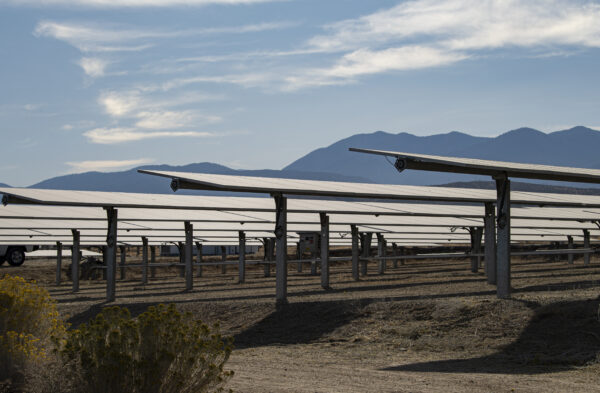 “When you think of solar power, California undoubtedly comes to mind. The state’s strong climate goals paired with abundant sunshine have helped California reach record rooftop and utility-scale solar buildout. But surprisingly, its community solar programs (not to be confused with community choice aggregation) haven’t been able to gain traction. Out of the 5,700 megawatts of installed community solar in the country, less than 1% of that is in California. And for perspective, California has more than 40,000 megawatts of installed solar capacity. Unfortunately, the state’s current community solar programs haven’t been able to incentivize these projects. … ” Read more from the Union of Concerned Scientists.
“When you think of solar power, California undoubtedly comes to mind. The state’s strong climate goals paired with abundant sunshine have helped California reach record rooftop and utility-scale solar buildout. But surprisingly, its community solar programs (not to be confused with community choice aggregation) haven’t been able to gain traction. Out of the 5,700 megawatts of installed community solar in the country, less than 1% of that is in California. And for perspective, California has more than 40,000 megawatts of installed solar capacity. Unfortunately, the state’s current community solar programs haven’t been able to incentivize these projects. … ” Read more from the Union of Concerned Scientists.
Sacramento Valley
Measuring and monitoring are essential to groundwater sustainability
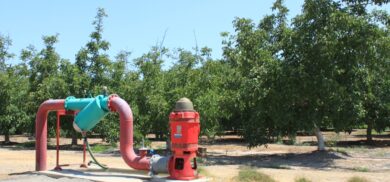 “Each spring groundwater levels are measured throughout the Sacramento Valley, including here in Butte County. As Watching Groundwater Level Recover in the Sacramento Valley noted earlier this year, water resources managers, Groundwater Sustainability Agencies (GSAs) and landowners throughout the Sacramento Valley are watching groundwater levels and quality to see how the aquifer systems will recover on the heels of some very dry years where there has been little surface water in certain parts of the Valley. We are seeing some encouraging trends on aquifer recovery in Butte County with the wet year and we will continue to monitor and collect important information to ensure the sustainable management of our groundwater resources. … ” Read more from the Northern California Water Association.
“Each spring groundwater levels are measured throughout the Sacramento Valley, including here in Butte County. As Watching Groundwater Level Recover in the Sacramento Valley noted earlier this year, water resources managers, Groundwater Sustainability Agencies (GSAs) and landowners throughout the Sacramento Valley are watching groundwater levels and quality to see how the aquifer systems will recover on the heels of some very dry years where there has been little surface water in certain parts of the Valley. We are seeing some encouraging trends on aquifer recovery in Butte County with the wet year and we will continue to monitor and collect important information to ensure the sustainable management of our groundwater resources. … ” Read more from the Northern California Water Association.
Groundwater political group protests Tuscan Water District
“A proposed special district in Butte County that would carry out groundwater recharge projects, known as the Tuscan Water District, has met controversy in its formation process. Political group Groundwater for Butte began a public campaign Tuesday in a ballot-ripping protest at Durham Community Park held in opposition to the district’s formation for many reasons, one being a lack of public information and input on the matter. The district has gone through Butte County’s agency formation process, and it is said county supervisors are set to vote as soon as Tuesday on whether or not to place the district’s formation on an official election ballot. According to its website, the formation of the Tuscan Water District attempts to fill a water-management void in the area of the Vina subbasin and a portion of the Butte subbasin. … ” Read more from the Chico Enterprise-Record.
Butte County groundwater agencies approve fees; DWR approves plans
“Fees to support two groundwater sustainability agencies that cover the majority of urban Butte County have been passed this week and will be placed on the 2023-2024 assessor’s property tax roll. The boards for the Vina GSA and the Wyandotte Creek GSA on Wednesday and Thursday approved their budgets at public meetings where residents protested the fees and did not succeed in stopping them. In addition to fees being passed, all three groundwater sustainability plans for the Vina subbasin, Wyandotte Creek subbasin and the Butte subbasin have been approved by the Department of Water Resources. … ” Read more from the Chico Enterprise-Record.
Rural residents, farmers bring groundwater-sustainability issues to Yolo County supervisors
“The Yolo County Board of Supervisors showed themselves to be — as one individual referred to himself in the public comments — “ag-vocates” in the board meeting on Tuesday, July 11. Not only did they approve the acceptance of a sizeable grant from the California Department of Parks and Recreation, but the supervisors also addressed the seriousness of groundwater-sustainability issues raised by small farmers and rural residents in Yolo County’s areas of special concern. The board received an update on the drought and current groundwater conditions spearheaded by the Yolo County manager of natural resources, Elissa Sabatini. She delved into reports of the dry wells popping up around Yolo County, which include 49 confirmed since 2021, 21 of those remaining dry; and the fact that there have been no reports since March of 2023. Sabatini also mentioned a current petition making the rounds on change.org to stop drilling new wells on historically non-irrigated land of Yolo County. … ” Read more from the Winters Express.
San Joaquin Valley
Kings County: Local water district challenges water export ordinance
“Corcoran area water district El Rico GSA has sued Kings County over the county’s new groundwater export ordinance. The lawsuit, received June 8, says the County did not follow the California Environmental Quality Act (CEQA) procedures that they are mandated to follow. The district says the ordinance, passed Nov. 29, 2022 was adopted with only one hearing in a few weeks’ time. not allowing for input from water agencies. The news that the County wanted to move forward on the ordinance was met with criticism from a number of local water entities. El Rico maintains that allowing time for input could have ironed out problems they say include the issue of groundwater imports into the county. … ” Read more from the Hanford Sentinel.
SoCAL WATER DIALOG: SGMA implementation in the San Joaquin Valley
Groundwater is a critical resource, supplying nearly 40% of the state with water to support cities and farms. With droughts increasing in severity and frequency and climate change putting stress on local communities across the state, it has become increasingly clear that California can no longer manage groundwater resources as we have in the past. This recognition led to the passage of the Sustainable Groundwater Management Act (SGMA) in 2014 – a law designed to provide statewide guidance for managing California’s precious groundwater resources sustainably. Eight years in, how is the implementation of SGMA going?
In a presentation to the Southern California Water Dialog, Ellen Hanak, vice president and director of the Water Policy Center and a senior fellow at the Public Policy Institute of California (PPIC), gave a status check on SGMA implementation with a focus on the San Joaquin Valley, which is ground zero for SGMA implementation. In the San Joaquin Valley, bringing groundwater basins in to balance will necessitate significant amount of irrigated lands to come out of production. Ann Hayden, Interim Vice President of Climate Resilient Water Systems for the Environmental Defense Fund, discussed how the state’s Multibenefit Land Repurposing Program hopes to help with the transition. … ” Click here to read this article from Maven’s Notebook.
State pays valley farmers millions to keep water in the ground
“The state is sending millions to farmers throughout the San Joaquin Valley to keep water in the ground. The money, paid through the LandFlex program, goes to groundwater sustainability agencies (GSAs) and then directly to farmers, paying them for every acre foot they don’t pump. On July 24, the Department of Water Resources announced awards to the Lower Tule River and Pixley GSAs of $7.7 million and $5 million, respectively, and $4 million to the Westlands Water District GSA. This is the second round of LandFlex funding. … ” Read more from SJV Water.
Cuyama Valley
Commercial carrot growers sued Cuyama Valley residents over groundwater and the first hearing is coming up
 “As the Cuyama Unified School District stepped out of a financial crisis after years of budget struggles, Bolthouse Farms and Grimmway Farms sued the district over groundwater rights. And if the district didn’t join in the adjudication case, it risked losing water rights altogether, Superintendent Alfonso Gamino said. “We have it in our budget for unforeseen expenses. We have more than 5 percent [in reserves], but this was an expense we weren’t counting on and how much more we’re going to have to spend is unknown,” he said. “We have to defend our water rights, but my frustration is that we can finally breathe a little bit and it’s like, ‘Here we go again.’” … The corporations first filed the groundwater rights lawsuit in August 2021 and have continued serving every Cuyama Valley resident who relies on the Cuyama Valley Groundwater Basin. … ” Read more from the Santa Maria Sun.
“As the Cuyama Unified School District stepped out of a financial crisis after years of budget struggles, Bolthouse Farms and Grimmway Farms sued the district over groundwater rights. And if the district didn’t join in the adjudication case, it risked losing water rights altogether, Superintendent Alfonso Gamino said. “We have it in our budget for unforeseen expenses. We have more than 5 percent [in reserves], but this was an expense we weren’t counting on and how much more we’re going to have to spend is unknown,” he said. “We have to defend our water rights, but my frustration is that we can finally breathe a little bit and it’s like, ‘Here we go again.’” … The corporations first filed the groundwater rights lawsuit in August 2021 and have continued serving every Cuyama Valley resident who relies on the Cuyama Valley Groundwater Basin. … ” Read more from the Santa Maria Sun.
Cuyama Valley residents call for boycott of carrots after two growers sue landowners over water rights
“In a battle likened to David versus Goliath, Cuyama Valley residents have launched a boycott of carrots after two giant growers sued all landowners in the community over water rights. Bolthouse Farms and Grimmway Farms are among the plaintiffs for the lawsuit claiming hundreds of defendants — and all property owners — including homeowners, businesses and public agencies in the Cuyama Valley. At the heart of the fight is the rights to the water in the Cuyama Valley Basin, which has been designated among the state’s most overdrafted groundwater basins for years. Overdrafted basins happen when the amount of water pumped out is larger than the long-term average supply of water into the basin. Groundwater remains the lone source since State Water Project delivery isn’t available. … ” Read more from Noozhawk.
Ridgecrest
Ridgecrest: Court to allow amicus briefs in Mojave Pistachios water appeal
“The Fourth Appellate District, Court of Appeal will allow four amicus briefs to be filed in support of Mojave Pistachios in its legal action against the Indian Wells Valley Groundwater Authority according to an order issued by the court last week. “Amicus brief” means literally “friend of the court.” An amicus brief is filed by a person or organization who is not a party to a legal case but who wants to aid the court by providing information or arguments. Mojave Pistachios put out a press release yesterday on the development, but groundwater authority General Counsel Keith Lemieux said the news is no big deal. … ” Read more from the Ridgecrest Independent.
Groundwater Authority working on improving communication and engagement with the community, potentially
“At their board meeting on July 12, the Indian Wells Valley Groundwater Authority discussed their communication and engagement plan. The plan’s goal is to get the IWVGA to do a better job of communicating its important mission of ensuring sustainability of the IWV’s critically overdrafted water source. The IWVGA has a policy advisory committee that drafted the plan. This committee is made up of community members representing various stakeholders in IWV’s groundwater source, such as residents and commercial interests and so on. At the meeting, IWVGA acting general manager Carol Thomas-Keefer described the committee’s plan, and then also described which parts the IWVGA sees as a priority and which it doesn’t. … ” Read more from the Ridgecrest Independent.
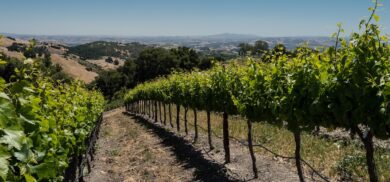
DWR Releases Decisions for Groundwater Management Plans in Critically Overdrafted Basins
Department of Water Resources Will Transmit Six Basin Determinations to State Water Board, Beginning State Intervention Process
From the Department of Water Resources:
 The Department of Water Resources (DWR) today announced decisions for groundwater sustainability plans (GSPs) for 12 critically overdrafted groundwater basins in Central California. These plans provide a roadmap for how groundwater basins will reach long-term sustainability, while implementing near-term actions such as expanding monitoring programs, reporting annually on groundwater conditions, implementing groundwater recharge projects and designing allocation programs.
The Department of Water Resources (DWR) today announced decisions for groundwater sustainability plans (GSPs) for 12 critically overdrafted groundwater basins in Central California. These plans provide a roadmap for how groundwater basins will reach long-term sustainability, while implementing near-term actions such as expanding monitoring programs, reporting annually on groundwater conditions, implementing groundwater recharge projects and designing allocation programs.
Of the 12, plans for six basins are recommended for approval with recommended corrective actions for the basins to remain in an approved status. The remaining six basins are deemed inadequate and are transitioning from DWR’s oversight to the State Water Board for State intervention under the Sustainable Groundwater Management Act (SGMA). Adopted in 2014, SGMA requires local groundwater sustainability agencies (GSAs) in medium- and high-priority groundwater basins, which includes 21 critically overdrafted basins, to develop and implement GSPs.
DWR recommends approval of plans for the following basins:
-
- Cuyama Basin in Santa Barbara, San Luis Obispo, Ventura and Kern counties
- Paso Robles Subbasin in San Luis Obispo County
- Eastern San Joaquin Subbasin in San Joaquin County
- Merced Subbasin in Merced County
- Westside Subbasin in Fresno and Kings counties
- Kings Subbasin in Fresno County
DWR deemed the following basin plans Inadequate:
-
- Chowchilla Subbasin in Madera and Merced counties
- Delta-Mendota Subbasin in San Joaquin, Stanislaus, Merced, Fresno, Madera, and San Benito counties
- Kaweah Subbasin in Tulare and Kings counties
- Tule Subbasin in Tulare County
- Tulare Lake Subbasin in Kings County
- Kern Subbasin in Kern County
GSAs are required to begin implementing their plans as soon as they are adopted locally, and these activities will continue even if basins are under State intervention. These plans will help local agencies address conditions that negatively impact groundwater within 20 years such as groundwater overdraft, degraded groundwater quality, land subsidence, and impacts to drinking water well users.
The GSAs whose plans are recommended for approval conducted critical analysis of groundwater levels, water quality and inter-connected surface waters to develop and refine sustainable groundwater management criteria. While additional analytical work is needed during implementation, DWR deemed the framework for management sufficient under the law.
“Since the onset of SGMA, local agencies have stepped up with dedication and progress in meeting critical milestones,” said DWR Director Karla Nemeth. “Protecting domestic wells, minimizing land subsidence and protecting groundwater resources are all State priorities. Implementation of these plans, which will require difficult adjustments as we go, will ultimately provide a safe and reliable groundwater supply for communities for generations to come.”
The basins deemed inadequate by DWR did not appropriately address deficiencies in how GSAs structured their sustainable management criteria. The management criteria provide an operating range for how groundwater levels prevent undesirable effects such as overdraft, land subsidence and groundwater levels that may impact drinking water wells, within 20 years. These GSAs did not analyze and justify continued groundwater level declines and land subsidence. Further, the GSPs lacked a clear understanding of how the management criteria may cause undesired effects on groundwater users in the basins or critical infrastructure.
In January 2022, after technical evaluation, DWR found the plans in these 12 critically overdrafted basins to be incomplete, identifying significant deficiencies that precluded approval. The GSAs had 180 days to correct the deficiencies and revise and resubmit their plans to DWR for re-evaluation, consistent with the regulations.
The basins with plans recommended for approval will continue to work with DWR and report on their progress in implementing their plans and completing corrective actions. DWR will transmit each basin deemed inadequate to the State Water Board, which may designate the basin probationary after providing public notice and then holding a public hearing. Any probationary designation will identify the deficiencies that led to intervention and potential actions to remedy the deficiencies. At the hearing, interested parties will have the opportunity to provide comments and technical information to the State Water Board regarding the deficiencies that were identified in the plans. Each basin is unique and will be evaluated individually by the State Water Board. State intervention and oversight is a critical step in making sure these basins succeed in achieving sustainable groundwater conditions. The ultimate goal is to have all basins return to local management with a clear path on how to achieve sustainability within 20 years of their original plan submittal.
DWR supports local agencies by providing planning, technical and financial assistance to help GSAs and local communities in this long-term effort to sustainably manage their groundwater basins. The critically overdrafted basins each received $7.6 million in Sustainable Groundwater Management grant funding to help them implement their plans. Complementary funding programs like DWR’s LandFlex program, state drought assistance programs, and the California Department of Conservation’s Multibenefit Land Repurposing program are helping the most critically overdrafted areas of the state reduce their dependence on groundwater and fast-track progress in reaching local sustainability goals.
Out of a total of 94 groundwater basins required to submit plans under SGMA, DWR has provided determinations for 24 basins and is currently reviewing an additional 61 plans from 59 of the state’s high- and medium- priority basins that were submitted to DWR in January 2022. DWR anticipates issuing determinations for the remaining basins throughout 2023.
For more information, visit:
-
- DWR’s SGMA Portal is the central repository for GSA and plan information and updates, including while under State Water Resources Control Board intervention
- DWR information on SGMA: Sustainable Groundwater Management Act (SGMA) (ca.gov)
- DWR Fact Sheet on SGMA GSP Evaluation
- State Water Resources Control Board SGMA website: Sustainable Groundwater Management Act | California State Water Resources Control Board
- State Water Resources Control Board Fact Sheet on SGMA State Intervention
Media Coverage:
-
- State rejects six San Joaquin Valley groundwater plans, which could bring enforcement action; Read more from SJV Water.
- California regulators reject San Joaquin Valley groundwater management plans; Read more from the LA Times.
- State rejects local plans for protecting San Joaquin Valley groundwater; Read more from Cal Matters.
- California groundwater management agencies falling behind on conservation goals; Read more from the Courthouse News Service.

DWR Awards $25 Million in LandFlex Grants to Protect Drinking Water Wells
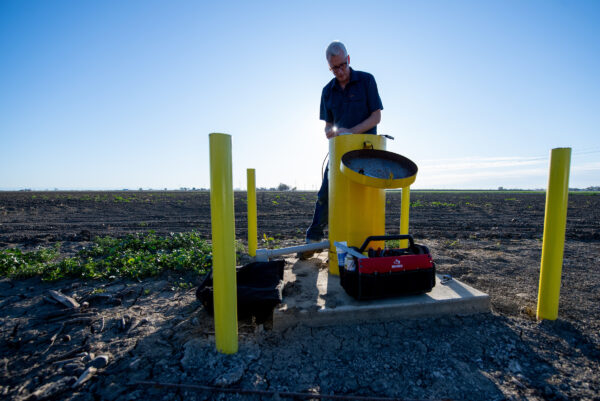 The Department of Water Resources (DWR), in coordination with the California Department of Food and Agriculture, today awarded $25 million in financial assistance to three groundwater sustainability agencies (GSAs) through the LandFlex Program. The funding will help preserve critical groundwater supplies in Central Valley communities.
The Department of Water Resources (DWR), in coordination with the California Department of Food and Agriculture, today awarded $25 million in financial assistance to three groundwater sustainability agencies (GSAs) through the LandFlex Program. The funding will help preserve critical groundwater supplies in Central Valley communities.
LandFlex is a tool for GSAs to help provide immediate protection of drinking water wells in underrepresented communities impacted by prolonged drought and overpumping of groundwater supplies. The program also helps GSAs accelerate efforts to better manage and protect groundwater supplies for long-term sustainability as required by the Sustainable Groundwater Management Act (SGMA) of 2014.
